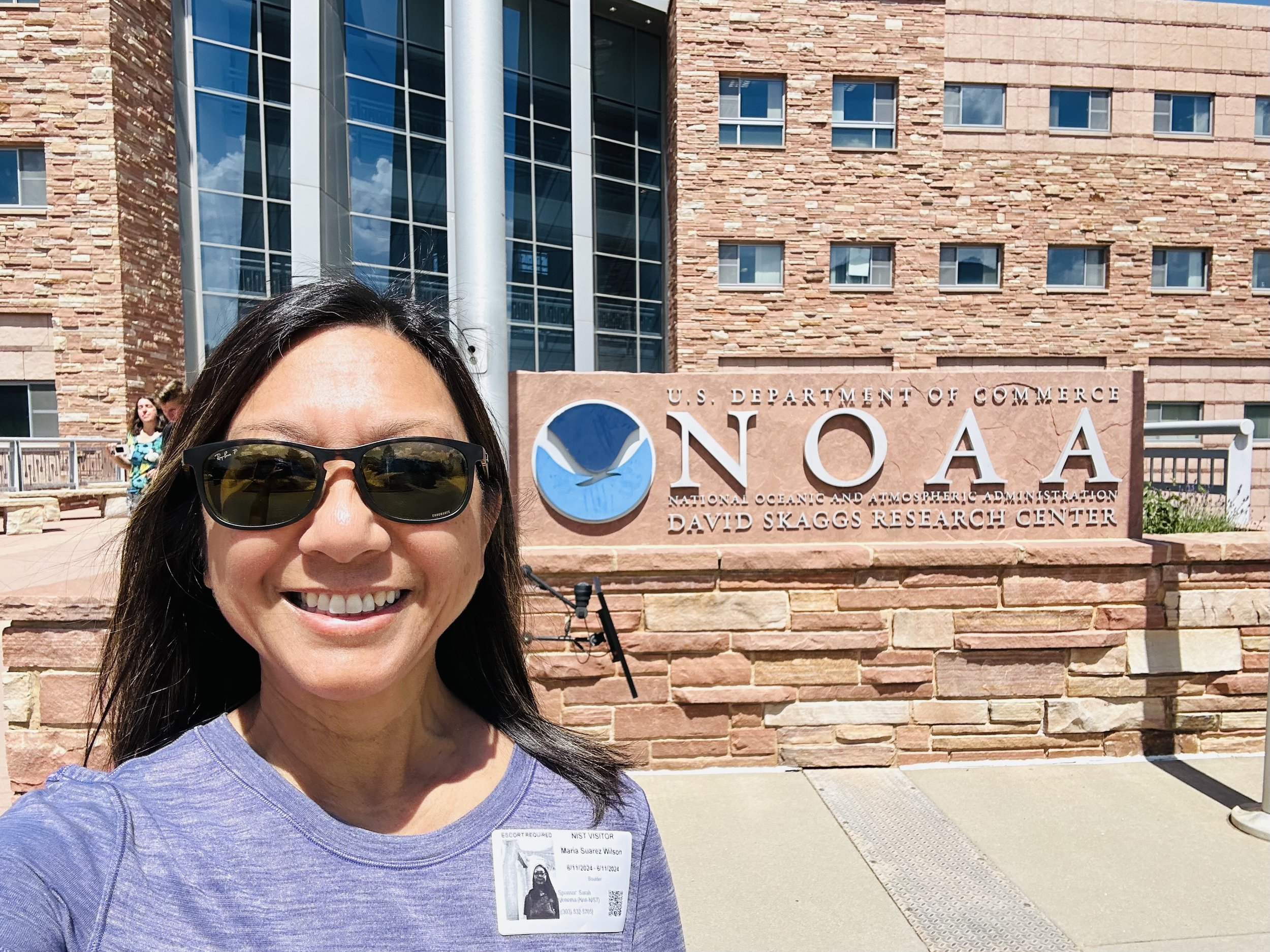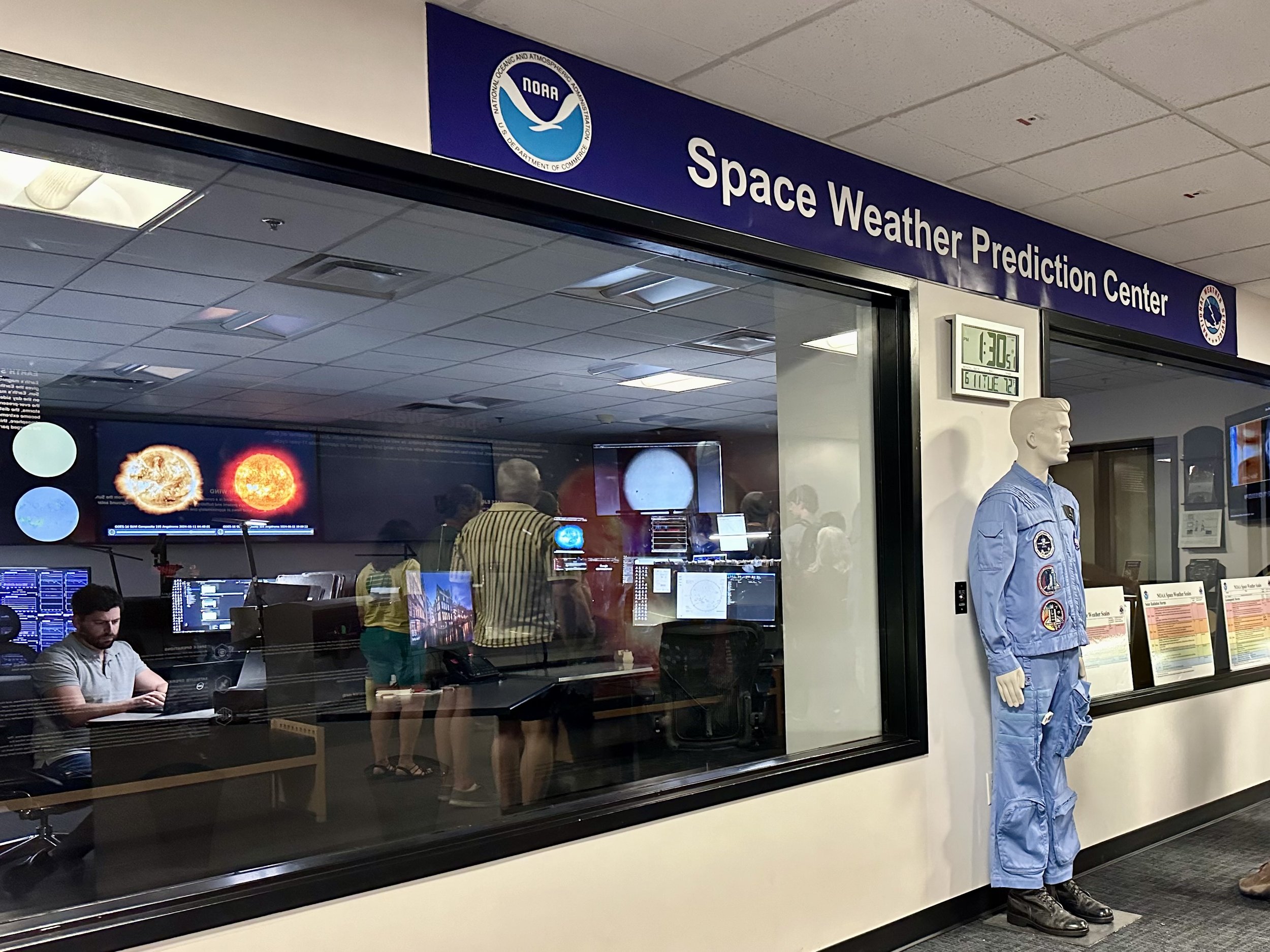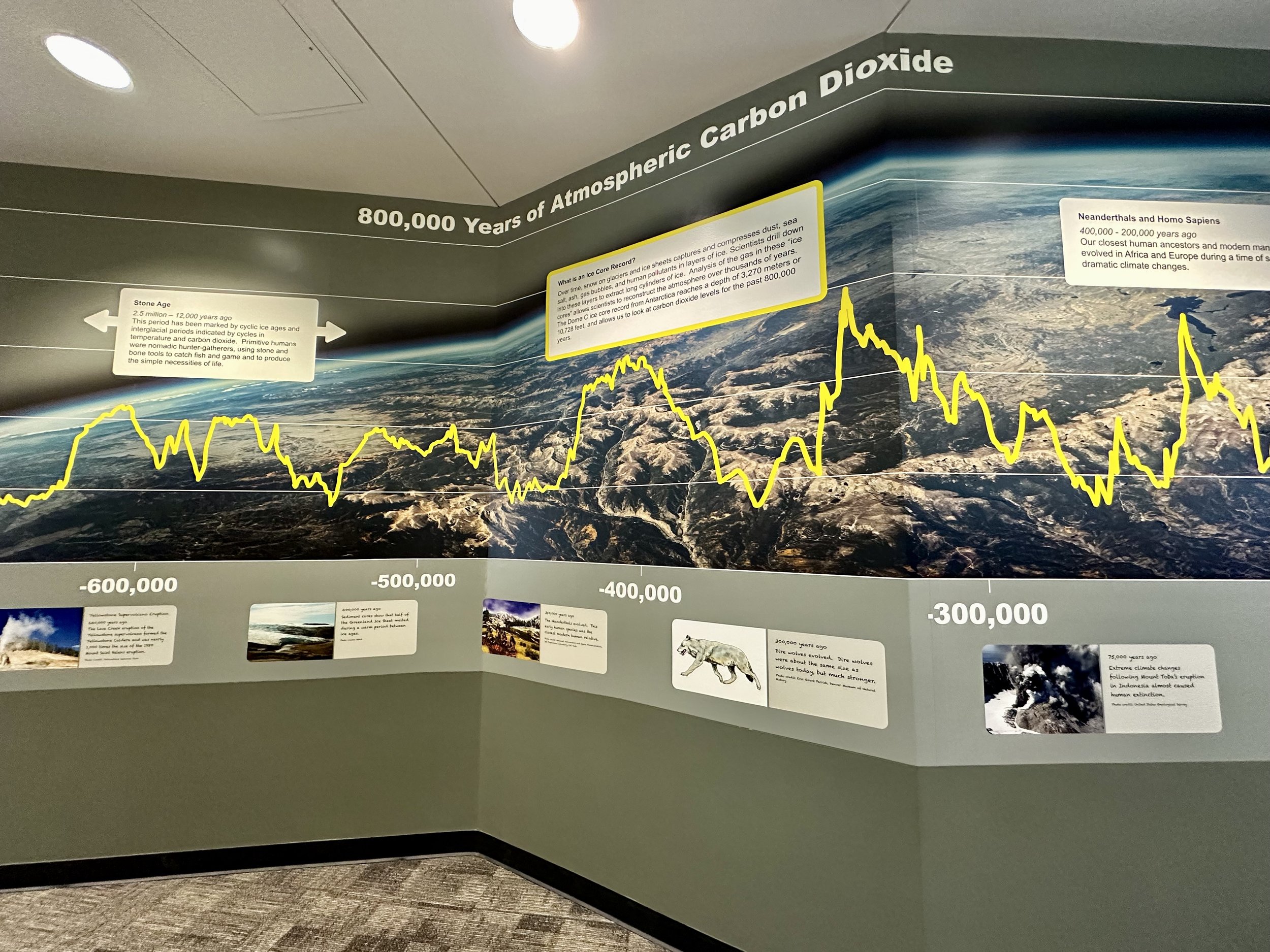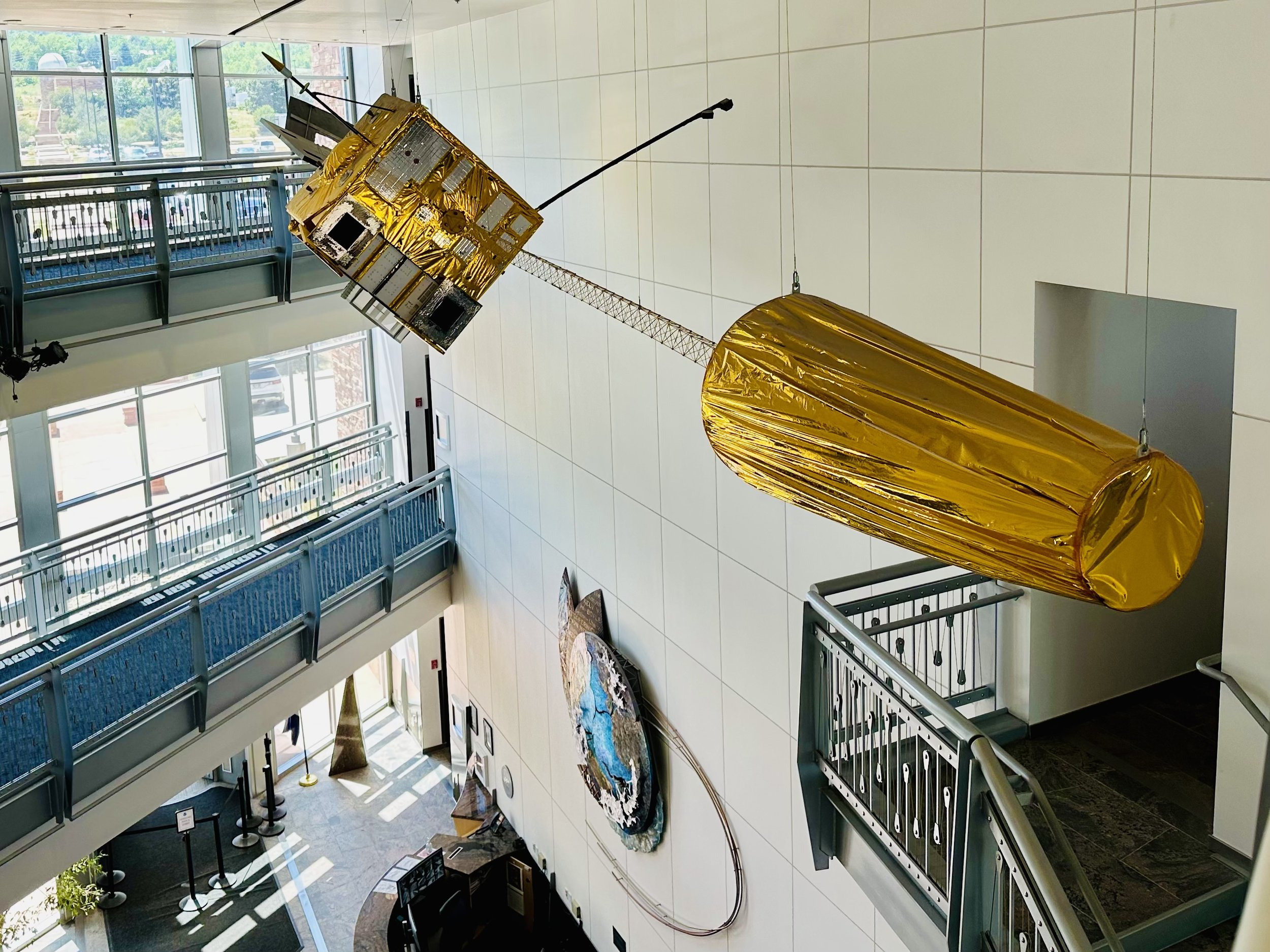NOAA Boulder
The other day, I took a guided tour at the National Oceanic and Atmospheric Administration (NOAA) facility in Boulder. As a longtime Florida resident, I was already familiar with the National Hurricane Center and its maps showing the projected path of each tropical storm. But NOAA is so much more than the National Weather Service; it’s a large and diverse government agency that sits under the U.S. Department of Commerce.
Security at NOAA was strict: I had to register for the tour in advance, and my car was screened thoroughly, inside and out. The main building, the David Skaggs Research Center, was a large boxy structure at the base of the Boulder Flatirons.
The NOAA tour guide was friendly and knowledgeable, and a precocious 8-year-old guest (clearly a budding scientist) impressed us all with his expertise. Our tour visited three of the dozen or so NOAA organizations in Boulder:
Space Weather Prediction Center (SPWC) - Scientists here monitor the sun for events that can affect us here on Earth. For example, the plasma from Coronal Mass Ejections (CMEs) can disrupt electric power grids, GPS apps, satellite and radio communications, and more. It can take a few days for that plasma to reach our magnetosphere, so the SPWC issues solar storm warnings, much like the ones we see for hurricanes and tornadoes. Just last month, a geomagnetic storm made auroras (northern and southern lights) visible around the world, even near the equator.
Global Monitoring Library (GML) - This team conducts research on greenhouse gases, ozone, air quality, and other factors affecting the Earth’s atmosphere and climate. They have measured the amount of carbon dioxide in our atmosphere going back 800,000 years by analyzing ice core samples from Antarctica. Since 1958, they have measured CO₂ levels using air samples from the NOAA observatory at Mauna Loa, Hawaii and other locations. It was sobering to see how CO₂ levels have climbed exponentially since the start of the industrial age.
National Weather Service Boulder - This is one of 122 NWS offices across the United States, and keeps the public informed about weather forecasts, watches, and warnings in North/Central Colorado. It operates 24x7 and is in constant communication with local media.
The last stop on the tour was Science on a Sphere, a theater where satellite images of Earth were projected onto a six-foot ball. Our guide used a tablet to display a variety of different datasets, including clouds, ocean currents, and climate records (such as hurricane tracks). The data came from NOAA’s Geostationary Operational Environmental Satellites, orbiting 22,000 miles above Earth. It was super-cool to see a huge, animated, three-dimensional view of our planet’s weather.




Science on a Sphere showing cloud data
It was fun to learn about the science and technology behind weather forecasts and climate change reports. Incidentally, a nearby building was the home of the National Institute of Standards and Technology (NIST), home of the Atomic Clock.